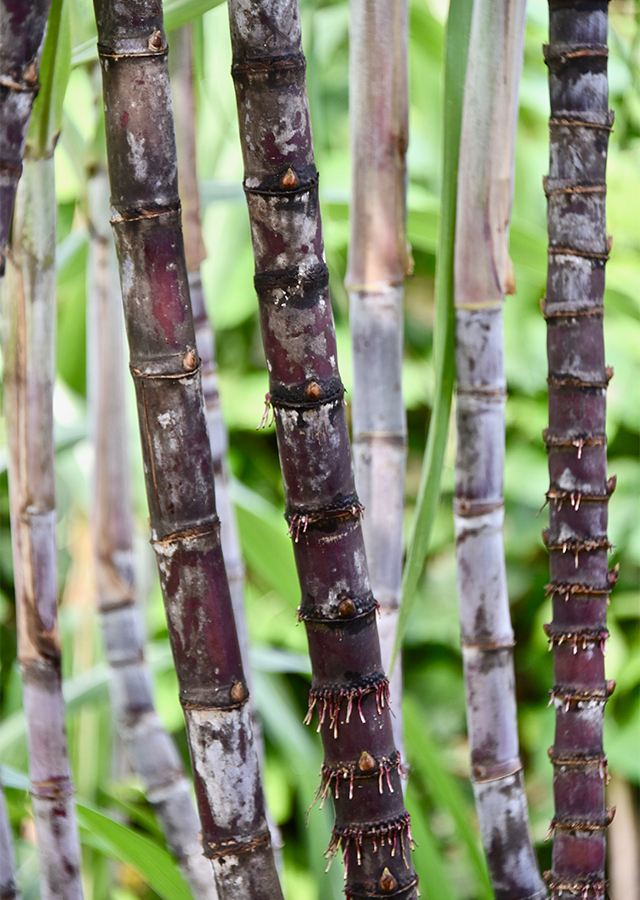Traditional Herbs from Saccharum officinarum
relieves heart palpitations
- Wash 3 handfuls of black sugarcane roots.
- Boil with 2 glasses of water until boiling until 1 glass remains.
- Drink 2 times a day.
cough
- Burn 100 g fresh stalks of black sugar cane, for 10 minutes, cool.
- Peel and cut into small pieces then chew. Suck the juice and discard the pulp.
What is Saccharum officinarum Looks like??



Parts of Saccharum officinarum that could be used
- Leaves
- Roots
- Stems
Saccharum officinarum Distribution
Black sugarcane spread to the Solomon Islands and New Caledonia by 8000 BC. The expansion of this plant to the east of Papua New Guinea in 6000 BC where sugar cane began to spread to Indonesia, the Philippines and India. From India, sugar cane was then brought to China and began to be used as a sweetener by the Chinese in 475 BC. Sugarcane can also be used as a fresh drink or as a spice in making drinks. The stems are a good source of fiber which can be used as a material for making paper.Agroecology of Saccharum officinarum
This plant grows in tropical and subtropical areas. Likes soil conditions that are not too dry and not too wet. Sugar cane is sensitive to poor aeration.
Morphology of Saccharum officinarum
- Fibrous roots, blackish brown.
- Stems are straight, segmented, lined with nodes, dark purple or dark red. The color of the juice of this sugar cane is brown and dark. The diameter is the smallest among the types of sugar cane others.
- Leaves are elongated like ribbons, leaf veins are parallel, alternate right and left, have midribs, have hairs, purplish green color.
- Flowers are long panicles 50-80 cm. The flower branches in the first stage are in the form of a bouquet and the next stage is a bunch with two spikes 3-4 mm long.
- Fruit like rice, has one seed, large body \u2153 seed length.
Cultivation of Saccharum officinarum
Seedlings are taken from sugarcane stems with 2-3 buds that have not yet grown (called stem cuttings/mule seeds). Another way is to use sugar cane shoots with two or more eyes (called shoot cuttings/stopstek).
Saccharum officinarum, more details :
Chemical Content of Saccharum officinarumAlkaloids, flavonoids (naringenin, tricin, apigenin, luteolin), ferulic acid, cucuric acid, quercetrin, caffeic acid, ellagic acid, polyphenols, tannins.
Benefits of Saccharum officinarum
Fights infections, treats hypertension, jaundice, bleeding, whooping cough, snake bites and poison arrows, relieves palpitations.
Simplisia of Saccharum officinarum
Another Facts for Saccharum officinarum :
Synonym of Saccharum officinarumArundo saccharifera Garsault, Saccharifera officinalis Stokes, Saccharum atrorubens Cuzent & Pancher ex Drake
Habitus of Saccharum officinarum
Herb. Annual herb, reaches 2-4 m in height
Habitat of Saccharum officinarum
- Forest
- Bushland
- Grassland
No comments:
Post a Comment